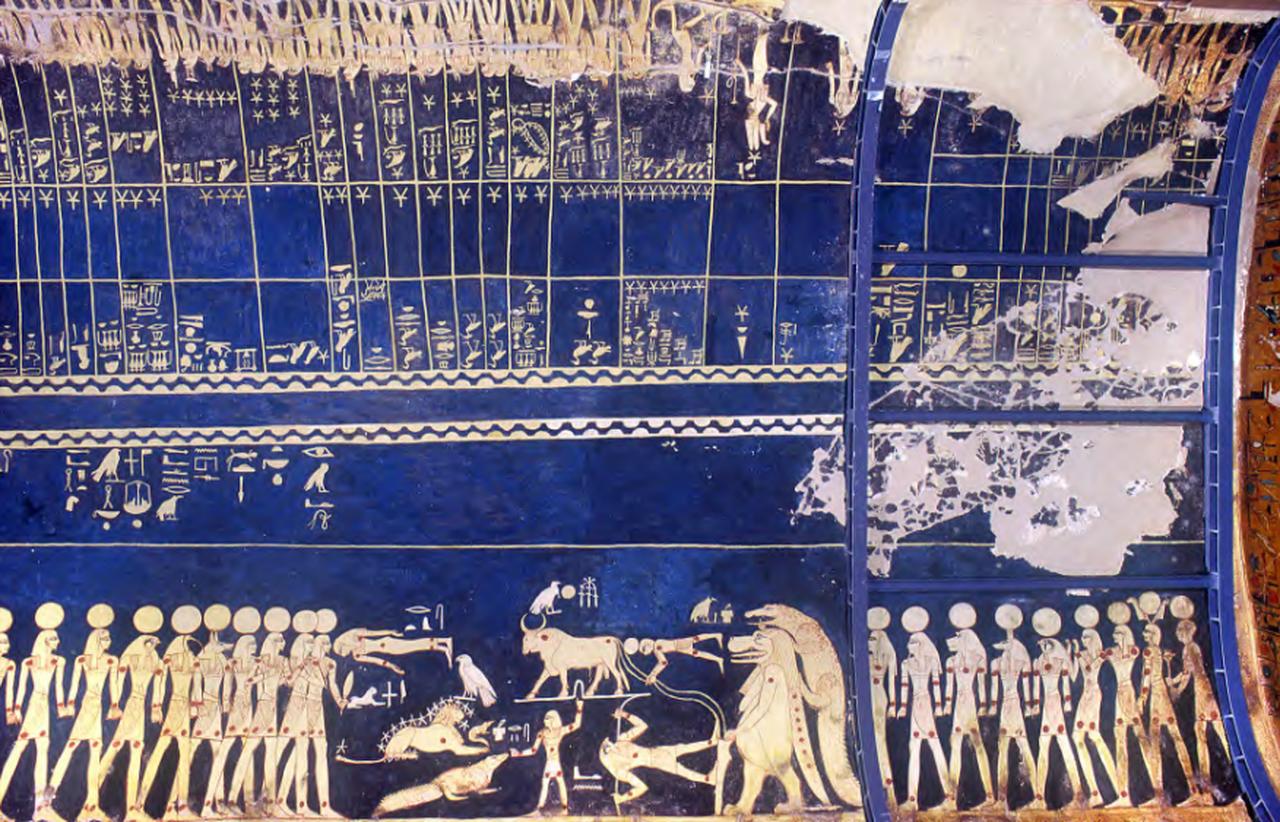
A U.K. astrophysicist believes he may have uncovered one of the earliest visual representations of the Milky Way—hidden in ancient Egyptian coffin art.
Or Graur, associate professor of Astrophysics at the University of Portsmouth, has identified a mysterious black curve crossing the body of the sky-goddess Nut on the coffin of a 3,000-year-old Egyptian woman. He argues that this visual feature could represent the Milky Way’s Great Rift—a dark dust band visible in the night sky.
In ancient Egyptian cosmology, Nut (pronounced “Noot”) is the personification of the sky. She is frequently shown as an arched woman, covered in stars, stretching over her brother Geb, the earth god. Nut plays a key role in the solar cycle, "swallowing" the sun at dusk and giving birth to it at dawn.
Graur's analysis, published in the Journal of Astronomical History and Heritage, examined 125 representations of Nut from a dataset of 555 ancient coffins spanning 5,000 years. Most show Nut adorned with stars or solar symbols—but one stood out.
On the outer coffin of Nesitaudjatakhet, a chantress of Amun-Re, Nut’s body is marked by a thick, undulating black curve from her feet to her fingertips. Surrounded by stars on either side, the curve bears a striking resemblance to the Milky Way’s Great Rift as captured in astrophotography.
Graur explained, “Comparing this depiction with modern images of the Milky Way reveals a stark similarity. I believe this curve may represent the Great Rift, not previously recognized in Egyptian art.”

Similar patterns appear in four royal tombs in Egypt’s Valley of the Kings, notably in the tomb of Ramesses VI. There, thick golden curves divide celestial scenes featuring Nut, linking ancient beliefs with a possible understanding of the night sky.
In the tomb of Seti I (KV 17), curved black bands again appear between rows of yellow half-circles, suggesting a deliberate celestial symbolism.
Despite these cosmic clues, Graur cautions against equating Nut with the Milky Way. “Nut is not the Milky Way itself,” he noted. “Rather, she is the celestial canvas upon which stars, sun, and the Milky Way are displayed.”
This new visual analysis builds on a 2024 study by Graur, which used ancient Egyptian texts like the Pyramid Texts and Coffin Texts, alongside night sky simulations. That research proposed that in winter, the Milky Way aligned with Nut’s outstretched arms, while in summer, it traced her spine.